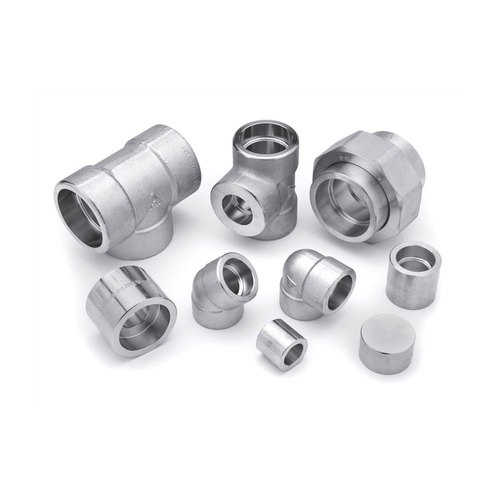Introduction
Forged Pipe Fittings are plumbing materials that support the direction of flow in elbows and tees. Reducers and rising tees are examples of devices that change the size of tubing. Connect distinct components, like couplings, and disrupt flows, like caps. Pipe fittings come in a variety of shapes and sizes. Elbow, Hat, Reducer, Union, Linking, Brace, Collar, Swage Nipple, Pipe, Brush, Extension Joint, Connectors, Olet (Weldolet, Sockolet, Elbowlet, Thredolet, Nipolet, Letrolet, Swepolet), Steam Traps, Flanges, and Lock The standard fittings are cast or hammered. Only seamless pipes are used to make wrought fittings. The machine produces welded fittings with a large diameter.
Forged pipe fittings (Socket Weld and Threaded) are made to ASME (American Society of Mechanical Engineers) B16.11, MSS SP-79 83 9597, and BS3799 standards and are used to connect pipes and pipelines for nominal bore schedules. Forged iron pipe fittings are available as socket weld pipe fittings or threaded pipe fittings. A105 (carbon steel), nickel, or stainless steel alloy are used to make forged fittings. These fittings are thicker and tougher, and they are designed for severe industrial application. Pressure groups 2000 #, 3000 #, 6000 #, and 9000# are available for forged iron pipe fittings.
Manufacturing Processes for Forged Fittings
Pipe Fittings are made using a variety of manufacturing procedures to create Elbows, Tees, Reducers, and other pipe fittings. Smooth Pipe and Welded Steel are utilised to make fittings with filler content (ERW & EFW pipes cannot be used for constructed fittings). Plate fittings with large diameters are available.
The following are some of the different procedures that are utilised in the production of Forged Pipe Fittings:
1 – Monaka or Double weld seam Method
2 – Hydraulic Bulge method – Cold forming
3 – Hot forming or Extrusion Method
4 – Deep Drawing Method for caps
5 – Flare Method for Stub ends
1 – Monaka or Double weld seam Method
One of the most used procedures for making tile elbows. Each pair of raw material tiles is pushed and welded together after being symmetrically cut, reminding us of the Japanese delicacy “Monaka.” This method may be applied to a variety of materials and huge objects with a diameter more than one metre. It has two seams and modern welding equipment in operation to suit various global requirements.
2 – Hydraulic Bulge method – Cold forming
Internal pressure and axial feeding are used in the hydroforming tube to transform a tube into the desired shape. The operation’s consequences can be predicted using the finite-element method. The qualities of the tube materials are one of the most essential parameters in tube hydroforming finite element study. The hydraulic bulging test and the tensile test are two methods for assessing the characteristics of tubular substances. The parameters of the tube content must be determined using a hydraulic bulge check to examine the finite element method for tube hydroforming in a condition that is near to real tube hydroforming.
3 – Hot forming or Extrusion Method
Heated extrusion is a forging technique that involves forcing a hot billet through the hole of a moulded die. This article discusses both non-lubricated and lubricated hot extrusion. Forward or overt extrusion and reverse or indirect extrusion are the two non-lubricated types of hot extrusion. Lubrication is required in this situation. This lubrication should be achieved with glass powder in lower temperature extrusions and graphite or gasoline in higher temperature extrusions. While hot extruded materials are popular, there are a few disadvantages to hot extrusion, including the cost and maintenance of extrusion machinery.
4 – Deep Drawing Method for caps
Some of the most common cap-making techniques involve cutting a circle out of a plate and shaping it with a deep draw. Deep drawing is a technique for transforming sheet metal blanks into circular or irregular shapes that are longer than half their diameters. Deep drawing entails wrapping blank metal around a tube and then feeding it through a moulding cutting die. Sheet metal can be moulded into various shapes using a drawing press, and the finished design is determined by where the blanks are put. The metal used in deep drawing must be both malleable and resistant to stress and strain.
5 – Flare Method for Stub ends
Flaring is used to create Stub Ends or Lap Joint Flanges. A flare or flange face is carved off at the flow end. Welding is frequently used to create stub ends after the forge block has been machined to the final dimension.
For any queries about our products you can ( Contact Us )


Recent Comments